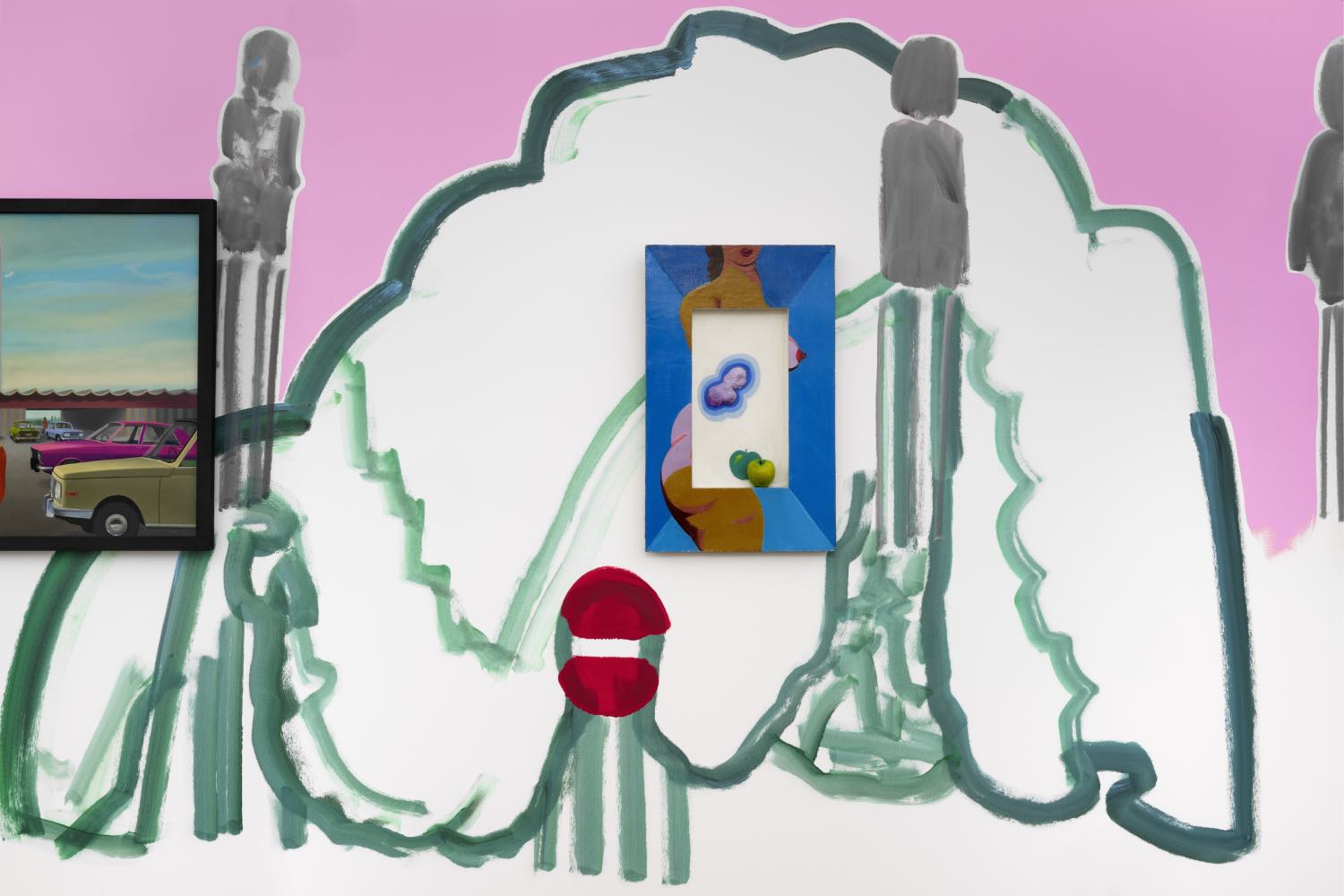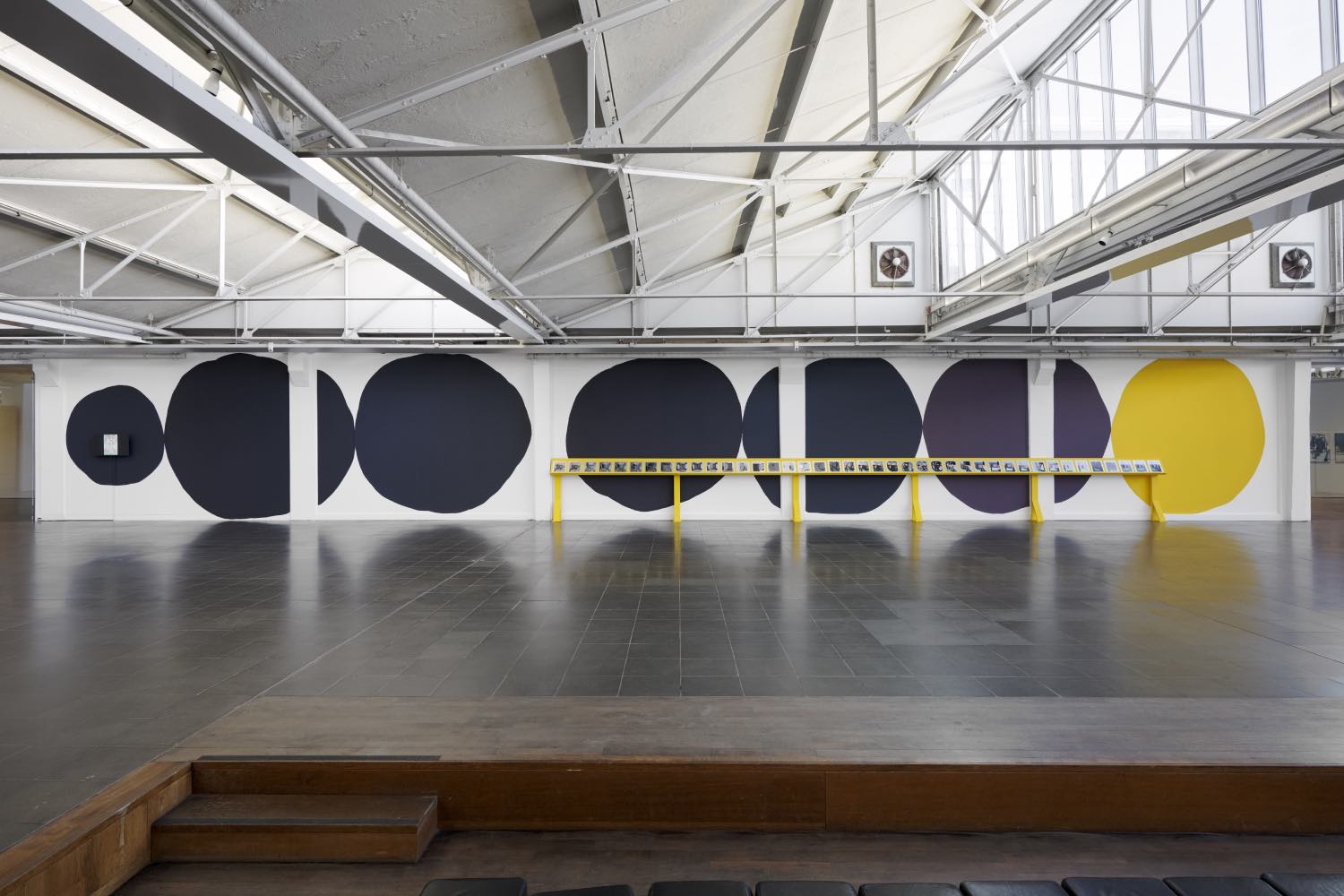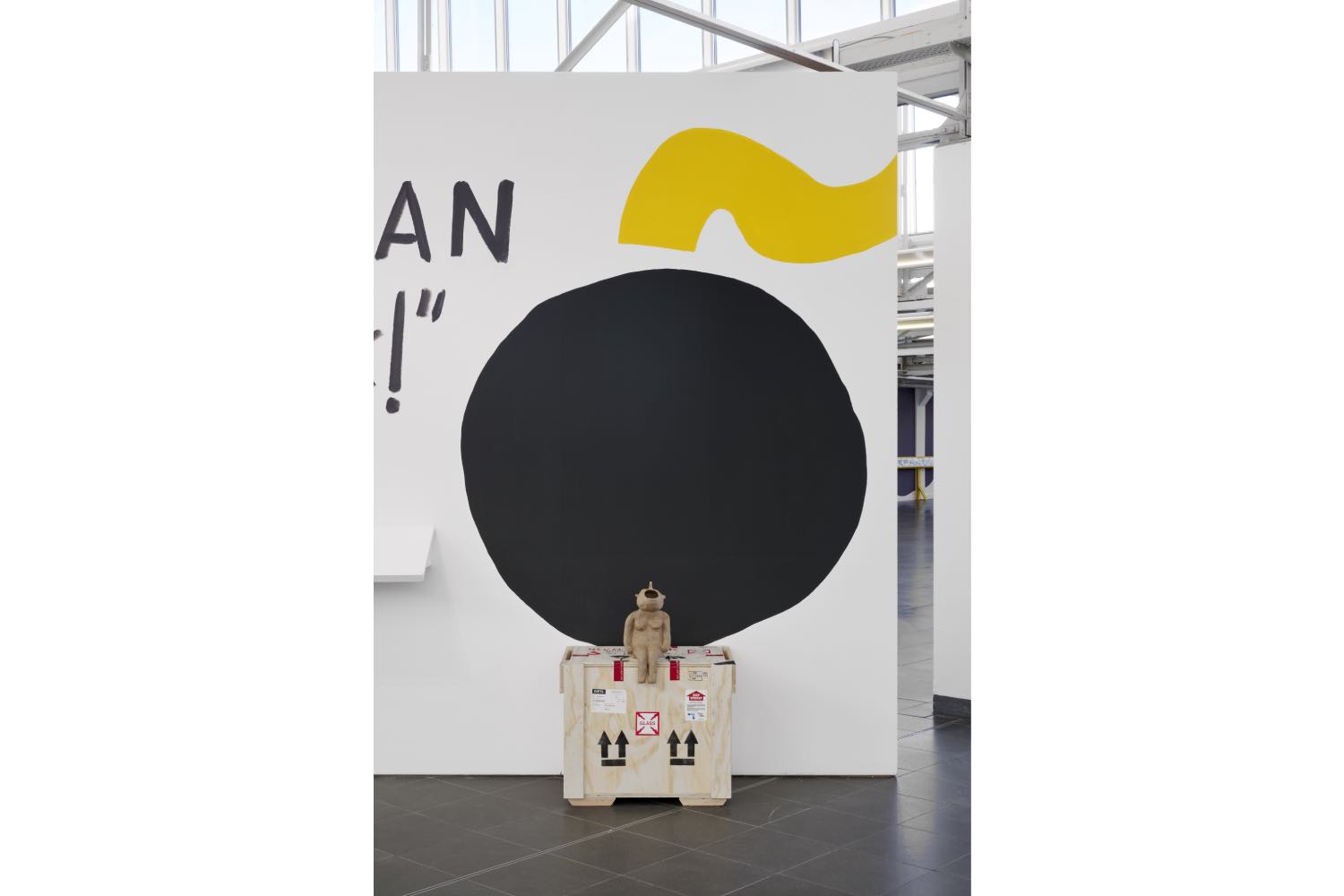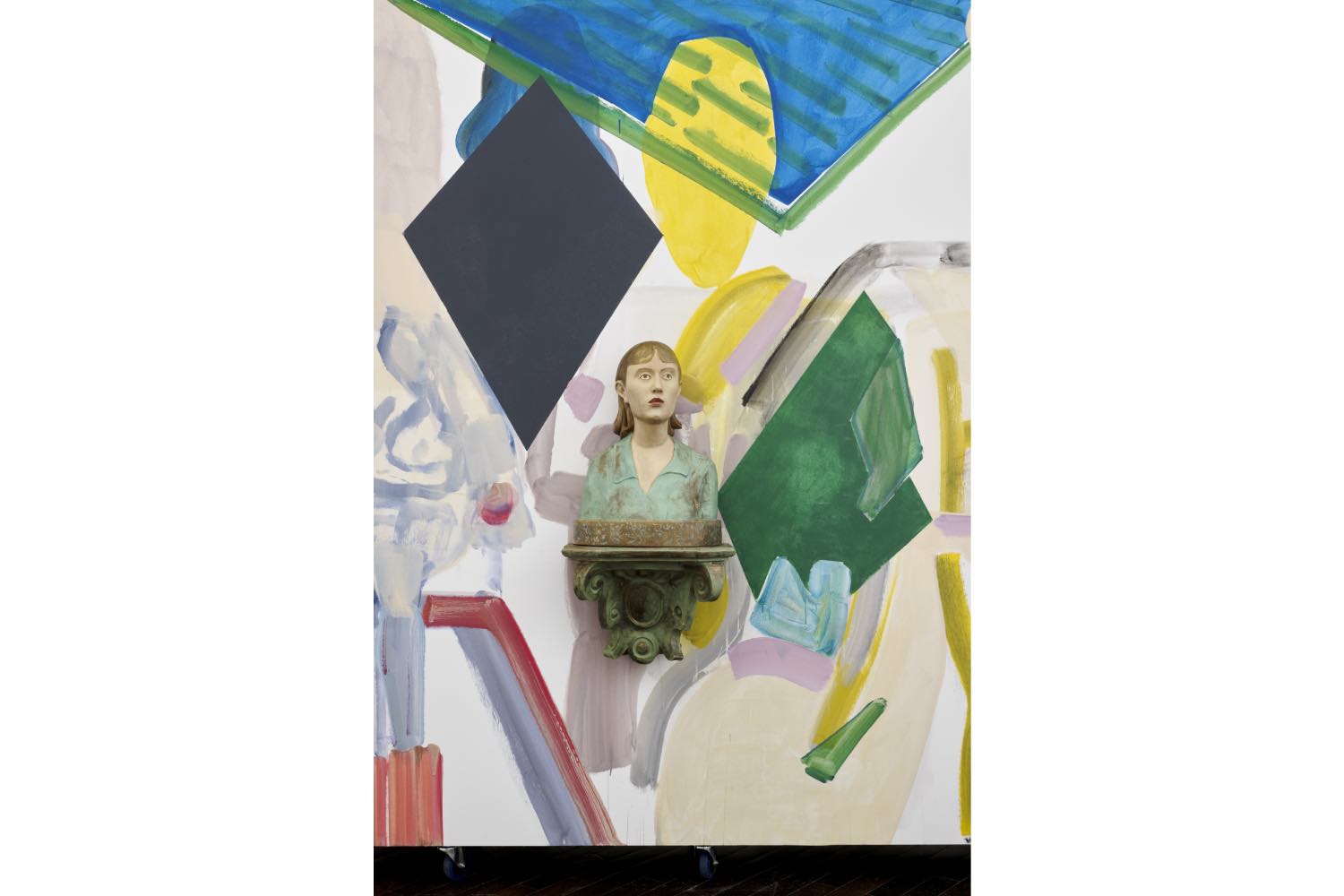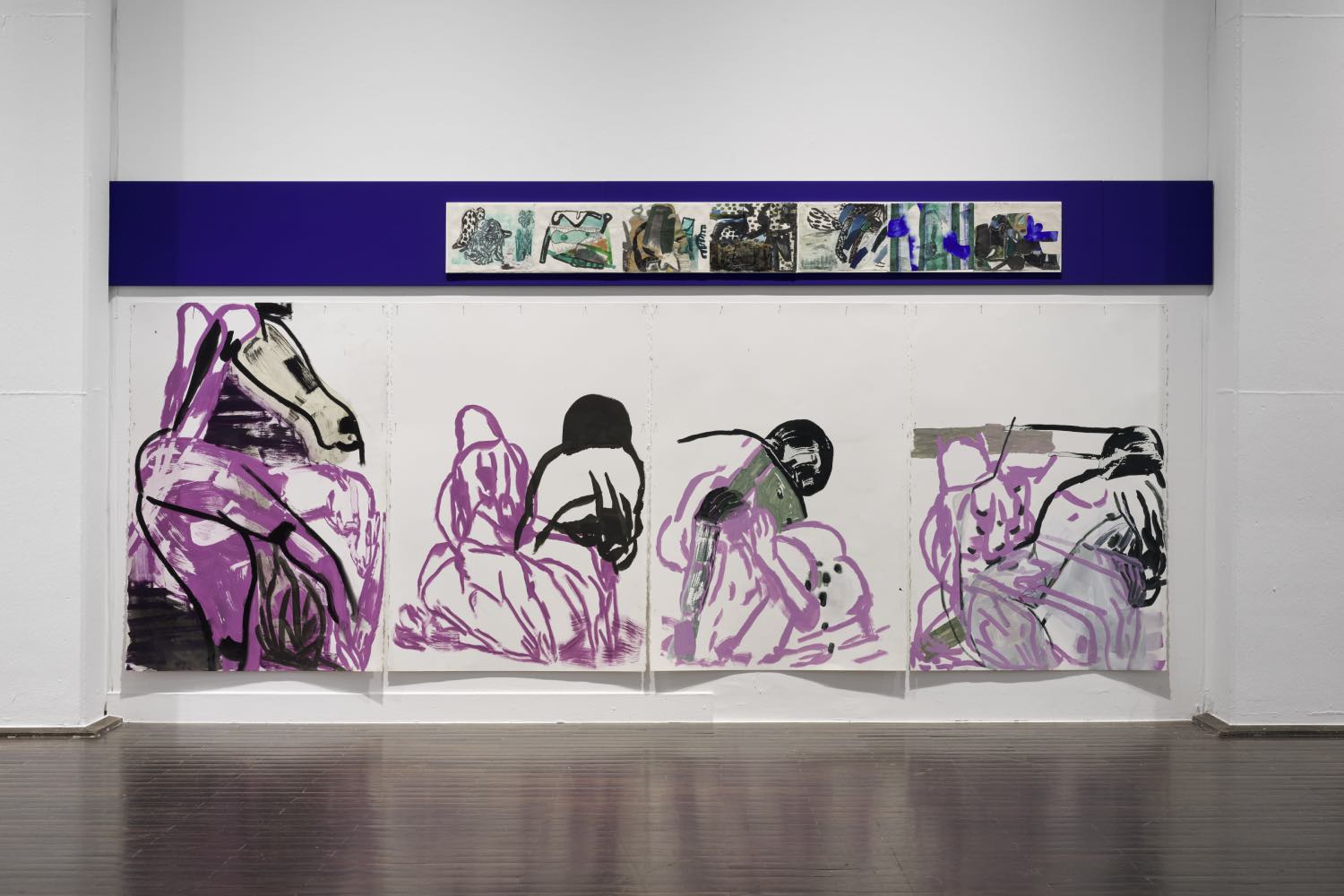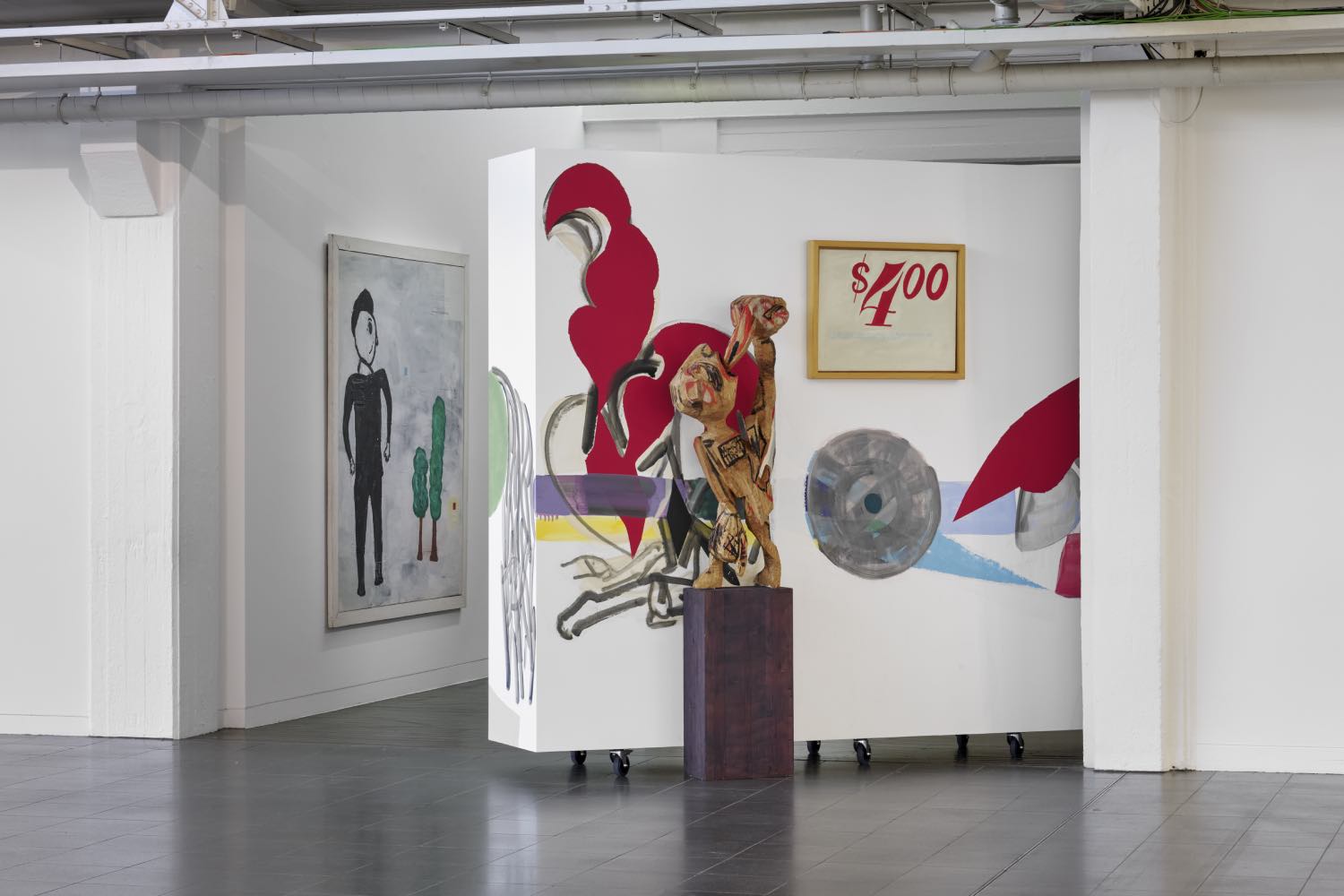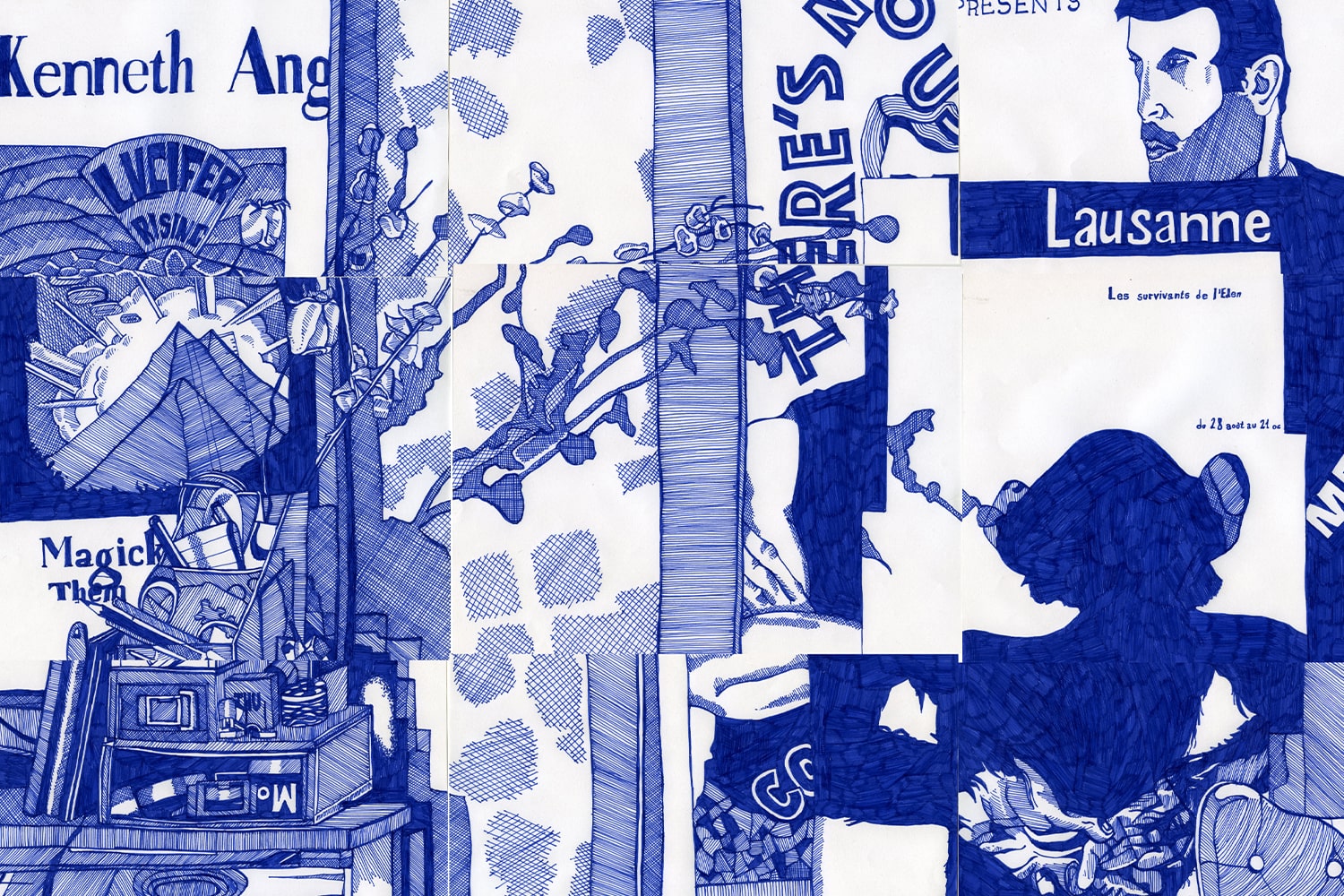A shelf with forty-one drawings on aluminum shows different stages in the creation of Amy Sillman’s painting Miss Gleason (2014). Printed in black and white, the images in Temporary Objects (2023–25) resemble archaeological diagrams, excavating an artistic process built on marking and erasing, becoming and unbecoming. The work is presented in the main hall of the Ludwig Forum, in Aachen, alongside a selection of zines and two animated videos. It is notable, however, that the “actual” painting the work is based on is not shown.
The artist understands herself as a “cutter,” practicing a form of editing inspired by her interest in time-based media like experimental films, books, and animation. The conceptual framing that marks the entrance of Sillman’s exhibition “Oh, Clock!” sets the tone for a painting show that favors the open-ended terrain of a process-driven practice over any notion of a heroic, self-contained work. The show, spanning the last fifteen years of Sillman’s career, thrives on relationships. The paintings and drawings don’t stand alone; instead, they form a network of connections, constantly referencing and responding to one another. This is especially evident in works like Untitled (Frieze for Venice) (2021). One frieze of smaller landscape-oriented works made by collaging, cutting, and watercoloring corresponds with larger vertical pieces that were screen-printed and hand-drawn. In these hybrid works, forms appear to be absorbed and regurgitated, evolving through repetition and variation. They create a dynamic, site-specific network, balancing fullness and emptiness, continuity and disruption. The layered works are rarely interested in illusionistic depth but in color spaces that seem to move forward instead of falling back. In this way they are briskly striking, but never in a boastful way.
This is especially evident in works like UGH for 2023 (2023–24), comprised of one hundred and twelve paintings on paper that take up a huge wall. More airy compositions at the top merge into denser, darker pieces toward the bottom, lending the installation a certain weight and sculptural aspect – a space-consuming gesture that doesn’t claim monumentality. Each individual piece functions as a border zone — an ephemeral space where exploration and experimentation briefly take shape. They form a rhythmically shifting, provisional structure, resisting resolution into a single, fixed composition. Thus, UGH for 2023 keeps a lingering state of pre-objecthood, where the not-quite-subject in us is addressed. Organic torso-like forms in fleshy pink emerge next to black-and-white letters. ”UGH” or “GAH” point to emotionally charged expressions that haven’t reached the category of proper language yet but hover in an unfinished affective state — they come from the gut. This sensuous awkwardness is characteristic of Sillman’s work. In the painting Mouth (2011), loosely sketched, hanging breasts swing like a pendulum growing clumsily from a tiny mouth — or is it a toothed vagina? In the series of “Election Drawings” (2016) made during Trump’s first presidency, we see creatures retching and vomiting in a miserable state of formlessness.
It’s striking how Sillman uses painting — traditionally the most canonical and commodifiable of art forms — to probe the very edges of what constitutes a finished work. With installations like UGH for 2023, Sillman doesn’t privilege the epic gesture of completion, but rather the messy threshold areas, a precarious balancing on the edge of collapse and coming-into-being. This is stirring and weirdly amusing at the same time. Similarly, the title of the show — “Oh, Clock!” — has a melancholic sense of the futility of escaping the passage of time, just as the exclamation point lends it an energetic, even excited tone.
This is clearly the sentiment with which Sillman approached the collection of the Ludwig Forum. Because the artist didn’t want to do a classical survey exhibition, she was given the opportunity to dig into the collection and curate an exhibition that is presented on the other side of the main hall. Sillman’s selection is eclectic and funny, with combinations that make you laugh out loud. For example, the small stocky man in uniform depicted in Lázaro García Medina’s Adam (como signo propio de la finitude en lo universal) (1989) looks even more puffed up next to Gotthard Graubner’s squeezed Kissen (1964). Ludwig Forum classics by Robert Rauschenberg, Jasper Johns, or Andy Warhol are presented alongside lesser-known artists like Belkis Ayón or works from the Russian part of the collection. Luckily, the museum gave Sillman carte blanche. Over two weeks, the artist painted double-sided wheeled walls with spontaneous forms and gestures, then layered selected works on top. Turning her own practice into a backdrop is a bold move — but one that feels open rather than imposing. Rather than hiding behind a seemingly neutral space, the presentation is transparent: an intuitive and subjective curation based on visual parameters that are key to the artist’s work: color, pattern, figure, and a sense of ruin. In a way, the approach is also generous, making it possible to explore these works anew and outside of their usual canonization and categorization – caught within a joyful, hazy mess of things.

